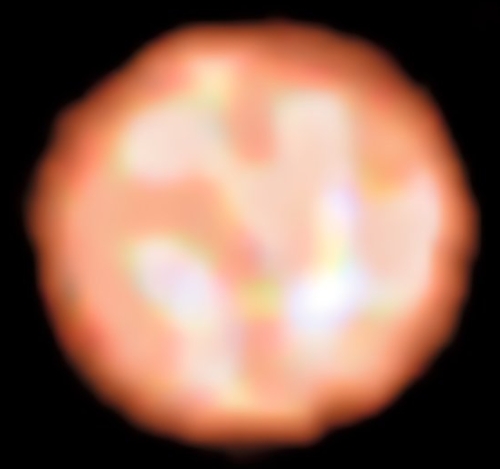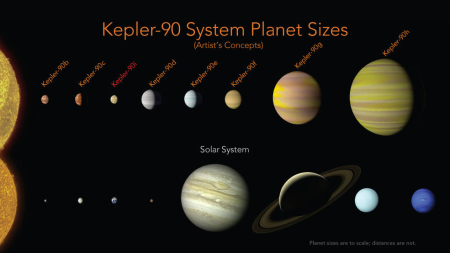Hubble finds new figure for universe expansion rate
The uncertainty of science: Using data from the Hubble Space Telescope astronomers have found evidence that universe’s expansion rate is faster than estimated in previous measurements.
The new findings show that eight Cepheid variables in our Milky Way galaxy are up to 10 times farther away than any previously analyzed star of this kind. Those Cepheids are more challenging to measure than others because they reside between 6,000 and 12,000 light-years from Earth. To handle that distance, the researchers developed a new scanning technique that allowed the Hubble Space Telescope to periodically measure a star’s position at a rate of 1,000 times per minute, thus increasing the accuracy of the stars’ true brightness and distance, according to the statement.
The researchers compared their findings to earlier data from the European Space Agency’s (ESA) Planck satellite. During its four-year mission, the Planck satellite mapped leftover radiation from the Big Bang, also known as the cosmic microwave background. The Planck data revealed a Hubble constant between 67 and 69 kilometers per second per megaparsec. (A megaparsec is roughly 3 million light-years.)
However, the Planck data gives a constant about 9 percent lower than that of the new Hubble measurements, which estimate that the universe is expanding at 73 kilometers per second per megaparsec, therefore suggesting that galaxies are moving faster than expected, according to the statement.
“Both results have been tested multiple ways, so barring a series of unrelated mistakes, it is increasingly likely that this is not a bug but a feature of the universe,” Riess said. [emphasis mine]
I should point out that one of the first big results from Hubble in 1995 (which also happened to be the subject one of my early published stories), the estimate then for the Hubble constant was 80 kilometers per second per megaparsec. At the time, the astronomers who did the research were very certain they had it right. Others have theorized that the number could be as low as 30 kilometers per second per megaparsec.
What is important about this number is that it determines how long ago the Big Bang is thought to have occurred. Lower numbers mean it took place farther in the past. Higher numbers mean the universe is very young.
That scientists keep getting different results only suggests to me that they simply do not yet have enough data to lock the number down firmly.
The uncertainty of science: Using data from the Hubble Space Telescope astronomers have found evidence that universe’s expansion rate is faster than estimated in previous measurements.
The new findings show that eight Cepheid variables in our Milky Way galaxy are up to 10 times farther away than any previously analyzed star of this kind. Those Cepheids are more challenging to measure than others because they reside between 6,000 and 12,000 light-years from Earth. To handle that distance, the researchers developed a new scanning technique that allowed the Hubble Space Telescope to periodically measure a star’s position at a rate of 1,000 times per minute, thus increasing the accuracy of the stars’ true brightness and distance, according to the statement.
The researchers compared their findings to earlier data from the European Space Agency’s (ESA) Planck satellite. During its four-year mission, the Planck satellite mapped leftover radiation from the Big Bang, also known as the cosmic microwave background. The Planck data revealed a Hubble constant between 67 and 69 kilometers per second per megaparsec. (A megaparsec is roughly 3 million light-years.)
However, the Planck data gives a constant about 9 percent lower than that of the new Hubble measurements, which estimate that the universe is expanding at 73 kilometers per second per megaparsec, therefore suggesting that galaxies are moving faster than expected, according to the statement.
“Both results have been tested multiple ways, so barring a series of unrelated mistakes, it is increasingly likely that this is not a bug but a feature of the universe,” Riess said. [emphasis mine]
I should point out that one of the first big results from Hubble in 1995 (which also happened to be the subject one of my early published stories), the estimate then for the Hubble constant was 80 kilometers per second per megaparsec. At the time, the astronomers who did the research were very certain they had it right. Others have theorized that the number could be as low as 30 kilometers per second per megaparsec.
What is important about this number is that it determines how long ago the Big Bang is thought to have occurred. Lower numbers mean it took place farther in the past. Higher numbers mean the universe is very young.
That scientists keep getting different results only suggests to me that they simply do not yet have enough data to lock the number down firmly.



